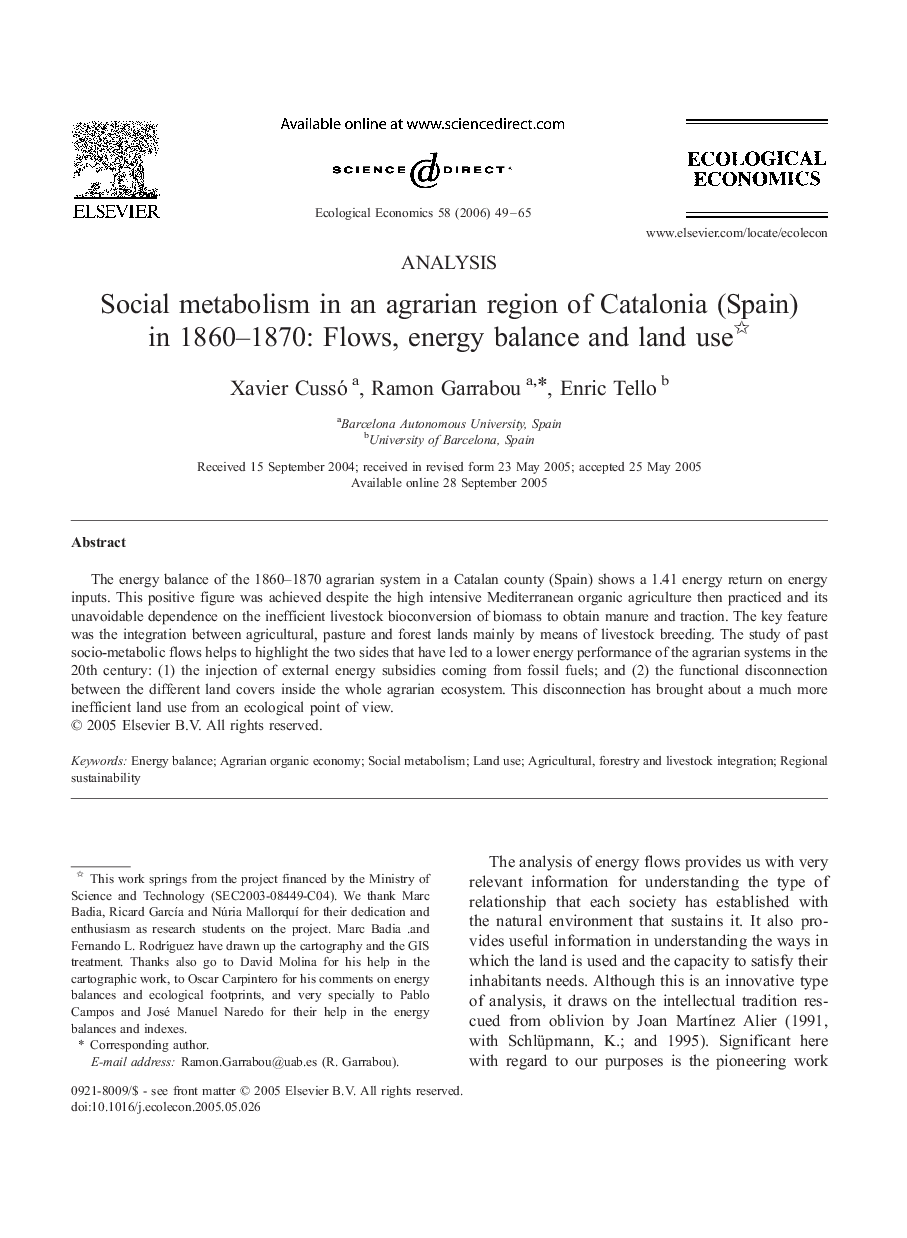| Article ID | Journal | Published Year | Pages | File Type |
|---|---|---|---|---|
| 5052359 | Ecological Economics | 2006 | 17 Pages |
Abstract
The energy balance of the 1860-1870 agrarian system in a Catalan county (Spain) shows a 1.41 energy return on energy inputs. This positive figure was achieved despite the high intensive Mediterranean organic agriculture then practiced and its unavoidable dependence on the inefficient livestock bioconversion of biomass to obtain manure and traction. The key feature was the integration between agricultural, pasture and forest lands mainly by means of livestock breeding. The study of past socio-metabolic flows helps to highlight the two sides that have led to a lower energy performance of the agrarian systems in the 20th century: (1) the injection of external energy subsidies coming from fossil fuels; and (2) the functional disconnection between the different land covers inside the whole agrarian ecosystem. This disconnection has brought about a much more inefficient land use from an ecological point of view.
Related Topics
Life Sciences
Agricultural and Biological Sciences
Ecology, Evolution, Behavior and Systematics
Authors
Xavier Cussó, Ramon Garrabou, Enric Tello,
